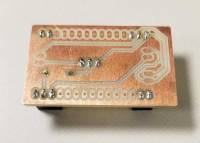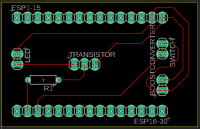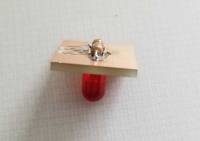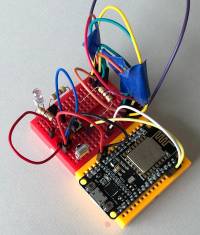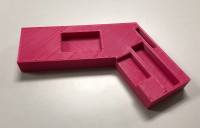Table of Contents
A Guide to Creating a Renter & Dorm-Friendly Workspace
Carving out a productive workspace can be tough, especially when you're navigating the strict rules and limited space of a rental or dorm room. Creating a dedicated workspace is key for studying, remote work, or just tackling your to-do list, but sometimes it feels impossible to find a spot to get away. However, you can design a functional area that motivates you without risking your security deposit or breaking any of those strict dorm rules. This guide is a blueprint to putting together a renter and dorm-friendly workspace that boosts concentration and productivity.
Defining Your Space
Begin by both mentally and visually establishing your workspace. Even if you’re sharing a space with roommates, you can create clear boundaries.
Strategic Positioning: Face your desk towards a wall to limit distractions. If a wall isn't an option, using a bookcase or a folding screen can act as a visual barrier.
Anchor with a Rug: Use a small area rug to visually define your workspace. Even in a carpeted room, a contrasting rug can create a sense of separation and make your desk area feel distinct.
Double-Duty Furniture: Choose pieces that serve multiple purposes. An ottoman with storage holds supplies, and a bookshelf with a built-in desk provides storage and a workspace that can be folded away. A rolling cart is another choice for movable storage.
Optimizing Your Setup
Now that your workspace is defined, it's time to optimize it for productivity and focus.
Strategic Lighting: Good lighting is non-negotiable. Supplement natural light with an adjustable desk lamp. Consider lamps that offer various color and/or brightness settings for different tasks.
Declutter Deliberately: A cluttered space leads to a cluttered mind. Invest in stackable trays and drawer organizers to keep items off main surfaces. Tidy your workspace at the end of each use to prevent buildup.
Personalize with Removable Accents: String lights with photos, removable wall decals, or patterned washi tape can make the space feel your own without damaging surfaces.
Prioritizing Comfort
To avoid discomfort during long hours at your workspace, it needs to be as comfortable as possible.
Support Your Posture: If your chair lacks adequate support, consider a portable seat cushion or a lumbar pillow to promote good posture and reduce physical strain.
Raise Your Screens: Elevate your screens to eye level with books or a laptop/monitor stand to limit neck strain.
Keep Necessities in Reach: Place frequently used items within arm’s reach to minimize the need to stretch or get up, helping maintain focus.
Handling Workspace Waste
Creating your study or work zone will produce some waste. For day-to-day junk, having a small trash can and a separate bin for recycling is your go-to. Keep these emptied to prevent clutter accumulation.
For bigger purges, you might find yourself with more to get rid of. If you're in a dorm, there are usually designated areas for trash, but these fill up quickly. Renters typically accumulate more over time, and receptacles are often inconveniently located. No matter where you live, you’ll likely face fines for leaving anything behind.
If you encounter more items than your regular bins can handle, consider solutions like dumpster rentals, which offer an affordable way to dispose of waste. Keeping your workspace clear of unwanted items is key to maintaining focus and productivity.
Conclusion
A functional and inspiring workspace in your rental or dorm is entirely attainable with a little planning and creativity. By using temporary setups, maximizing space, and prioritizing organization, you can create an environment that enhances focus and productivity, all without compromising any rules.
Contact/Code Source
Persons Involved
Project Leads
| Position | Name | |
|---|---|---|
| Project Oversight: | Bennett Maciorowski (LUG Alumni Advisor) | bennettmaciorowski@gmail.com |
| Project Lead/Manager: | Zhongyi Chen | zchen230@uic.edu |
Participants
| Name | |
|---|---|
| Mohammed Rashad | mrasha3@uic.edu |
| Anthony Venturella | aventu6@uic.edu |
| Alex Woo | awoo8@uic.edu |
| Frederick Dempsey | frd2@uic.edu |
| Jaden Mossman | jmossm2@uic.edu |
| Frank Li | fli30@uic.edu |
| Akash Pillai | apilla20@uic.edu |
| Shirley Li | sli235@uic.edu |
| Julianne Pabona | jpabon3@uic.edu |
| Jeff Guo | sguo35@uic.edu |
Project Structure
Schematics
Documentation
Hardware Documentation
Back End Documentation
Meeting Notes
Meeting 1 [10/22/2018]
Blaster requirements
• Require reload after 9 shots
• Connect to vest or whatever target the user will wear
• Shut down blaster based on signal
• Audio or visual display of reload requirement or disabled
• Ability to send score to server
Wearable target requirements
• When shot light up and send signal to blaster and server
Server/display requirements
• Keep track of players and their scores
• Keep track of shots fired and shots that hit (accuracy)
• Create display for active games and display score and stats
Meeting 2 [11/12/2018]
• Determined needed to increase organization and planning
• Need to investigate Lenses to increase range on infra red LEDs
Meeting 3 [11/20/2018]
Blaster planned first prototype features
• IR LED - attempt to supply it the maximum current to test farthest range
• Button - basic button for activating LED
• Ammo Tracker - use SMD LEDs + engraved clear acrylic to represent rounds
• Microcontroller - Esp8266 (ESP-12E board)
Microcontroller details
• Esp8266 functions the same way as Arduino; program it using the Arduino IDE
• Awesome Capabilities: Connect to wifi, create an access point, run as a server, run as a client
• Super cheap: costs under $3 each on Aliexpress; you all should try to get one
Meeting 4 [11/27/2018]
Project Updates:
- Circuit board for ammo tracker completed
Meeting Notes:
- Discussed prototype components again
- New component: shift register
- SMD LED colors: red, green, blue, yellow
- Plan for guns and number of guns
- Pistols and rifles; separate ammo count each
- Enough guns for 5 v 5 (10 guns)
- Demonstrations:
- Using a shift register to control LEDs
- Esp8266 running as a webserver
- IR receiver taking remote control IR signals as input
- Plan on doing some sort of fundraiser if more funds are needed
New tasks:
- Planned: use convex lens for IR LED; try 3D printing them or buying
- Testing: figure out how to use a transistor to supply IR LED with ~40ma
- Testing: experiment more with IR LED on sending and receiving signals
LaserTag Team Meeting 1 [9/13/2019]
- Welcomed new members
- Discussed software used
- Discussed meeting times: team & sub-teams
- Monday: 11:00AM - 12:00PM [CAD]
- Tuesday: 5:00PM - 6:00PM [Circuitry]
- Wednesday: 12:00PM - 1:00PM [Arduino]
- Friday: 5:00PM - 6:00PM [Team, ServerDev]
LaserTag Team Meeting 2 [9/20/2019]
- NodeJS Tutorial:
- Install software
- Http/Websocket server example
- Github intro
LaserTag Team Meeting 3 [9/27/2019]
- Github/Git Tutorial:
- Git commands
- Github projects
- Branch management
- Lasertag Guidelines
- Github projects for tracking progress
- New branch for each new issue/task
- Review and merge branches
LaserTag Team Meeting 4 [10/4/2019]
- Arduino/ESP8266 Tutorial
- Selecting boards
- Uploading code
- Examples: button press, PWM, websockets
- LaserTag Progress
- CAD group
- Basic frame for blaster prototype established, still work in progress
- Using temporary dimensions for now
LaserTag Team Meeting 5 [10/11/2019]
- Many people absent, new tasks pushed to next Friday
- Discussed how to start wifi access point using Arch Linux, other distributions work too
- create_ap package
- Establish connection between microcontroller and server using access point
LaserTag Team Meeting 6 [10/18/2019]
- Went over once again the things covered last week
- Introduce the tasks to the first implementation project
- CAD: Determine measurements/store into variables; prepare the design for first prototype
- Circuitry: Create the main board where the microcontroller will be mounted
- Arduino: Send IR signals using ESP8266; connect ESP8266 to server using websockets
LaserTag Team Meeting 7 [10/25/2019]
- Microcontroller circuit board created and milled; can now start attaching components together
- Moved incomplete issues to the second implementation project
- Spent the remainder of the day figuring out how to send IR signals from ESP8266
LaserTag Team Meeting 8 [11/1/2019]
- Introduce new issues for implementation 3 project
- Circuitry: Create battery contacts
- Arduino: Incorporate Websockets and IR signal sending to one program
- All tasks for prototype one created; likely have no more new tasks/issues
- Tried working on Arduino code, couldn't get much done cause microcontroller was not outputting to serial monitor
LaserTag Team Meeting 9 [11/15/2019]
- Nearing first prototype completion; no new tasks
- Experimented with wiring to confirm that circuit works; was able to send signal from across a room
- All that's left is the enclosure
LaserTag Team Meeting 10 [01/21/2020]
- Discussed various use cases of system to better understand requirements on IR protocol and server
| requirement type (HW/IR/SW) | User story | Potential implementation Idea |
|---|
Other Laser Resources: Build a Laser Communication System


